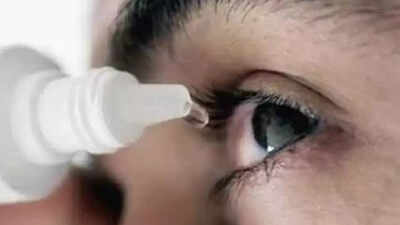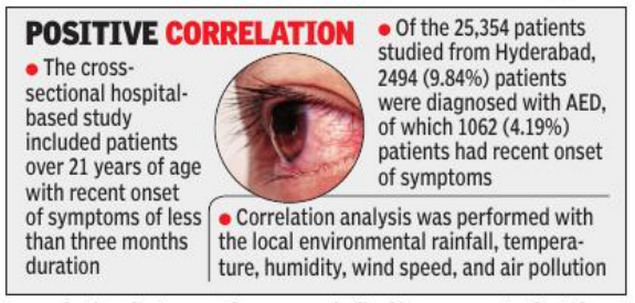Top Searches
- News
- City News
- Hyderabad News
- Air pollution behind 10% of eye problems in Hyderabad
Air pollution behind 10% of eye problems in Hyderabad
Air pollution behind 10% of eye problems in Hyderabad

Image used for representational purpose only
HYDERABAD: About 10 per cent of all eye problems reported in Hyderabad are linked to air pollution, particularly the high presence of particulate matter and obnoxious gases in the city atmosphere, reveals a research study conducted by LV Prasad Eye Institute, Hyderabad.
According to the study, the most common eye complaint linked to atmospheric pollution is allergic eye disease (AED), which is reported by one in every 10 people visiting ophthalmologists. The researchers have found "a correlation between the meteorological parameters such as environmental temperature, rainfall, humidity, wind speed and pollution with the temporal pattern of presentation of recent onset allergic eye disease (AED)".

The researchers said their finding suggests that there is "a clear pattern of certain environmental factors with the temporal pattern of AED in the population of Hyderabad district, with a peak prevalence seen in May and the lowest seen in August. An increase in humidity and rainfall contributes to a lower prevalence of AED cases during the year, whereas an increase in temperature and ozone at ground level conversely contributes to a higher prevalence of AED cases," they said.
The research team comprised Anthony Vipin Das and Sayan Basu. The results of the research were published in the scientific journal, International Journal of Environmental Research and Public Health.
"An increase in rainfall and humidity was associated with a lower prevalence, and an increase of temperature and ground-level ozone was associated with a higher prevalence of AED cases during the year among children and adolescents. The highest prevalence was seen in May with 6.09% and the lowest was seen in August with 2.12%. The weather parameters of rainfall, temperature, humidity, wind speed, and the pollution parameters of PM10, PM2.5, carbonmonoxide, nitrogen dioxide, sulphur dioxide, and ozone were assessed monthly," the study added.
Also, there was a positive correlation with the distribution of particulate matter and the month-wise prevalence of recent onset AED.
According to the study, the most common eye complaint linked to atmospheric pollution is allergic eye disease (AED), which is reported by one in every 10 people visiting ophthalmologists. The researchers have found "a correlation between the meteorological parameters such as environmental temperature, rainfall, humidity, wind speed and pollution with the temporal pattern of presentation of recent onset allergic eye disease (AED)".

The researchers said their finding suggests that there is "a clear pattern of certain environmental factors with the temporal pattern of AED in the population of Hyderabad district, with a peak prevalence seen in May and the lowest seen in August. An increase in humidity and rainfall contributes to a lower prevalence of AED cases during the year, whereas an increase in temperature and ozone at ground level conversely contributes to a higher prevalence of AED cases," they said.
The research team comprised Anthony Vipin Das and Sayan Basu. The results of the research were published in the scientific journal, International Journal of Environmental Research and Public Health.
"An increase in rainfall and humidity was associated with a lower prevalence, and an increase of temperature and ground-level ozone was associated with a higher prevalence of AED cases during the year among children and adolescents. The highest prevalence was seen in May with 6.09% and the lowest was seen in August with 2.12%. The weather parameters of rainfall, temperature, humidity, wind speed, and the pollution parameters of PM10, PM2.5, carbonmonoxide, nitrogen dioxide, sulphur dioxide, and ozone were assessed monthly," the study added.
Also, there was a positive correlation with the distribution of particulate matter and the month-wise prevalence of recent onset AED.
FacebookTwitterLinkedinEMail
Start a Conversation
end of article

